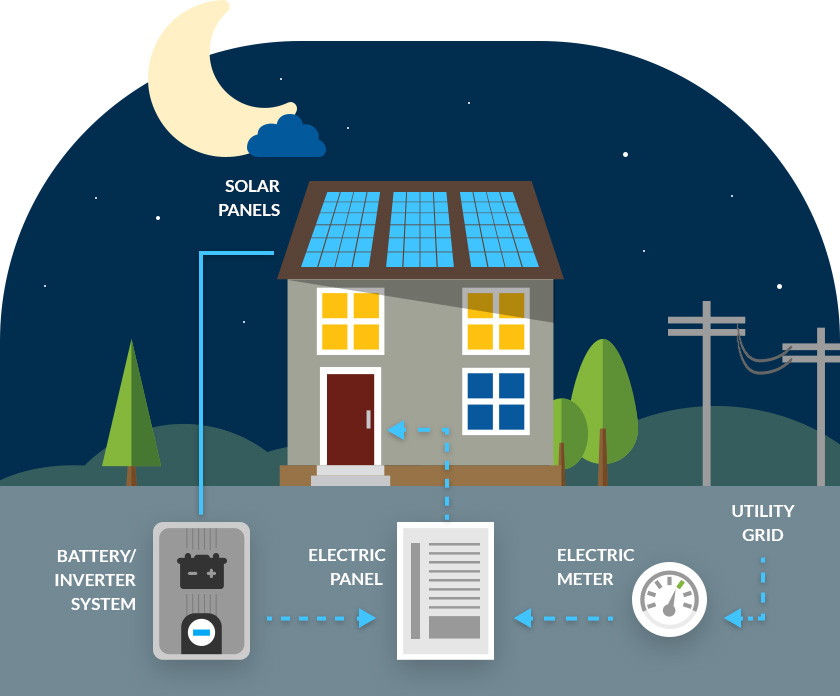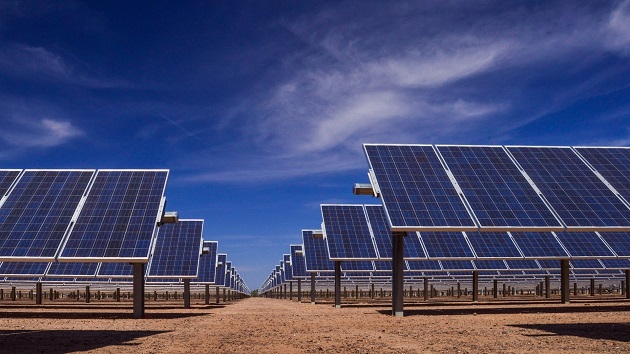Virginia Solar Panel Contractors: Lumina Solar Specializes In Offering Advanced Photovoltaic Solutions For Houses And Companies
History and Establishing
Have you ever wondered how a solar panel company springs from a mere stimulate of motivation into a powerhouse of renewable energy? It frequently begins with a vision-- one sustained by a mix of innovation, determination, and a pinch of serendipity. The journey of many solar companies mirrors the more info advancement of the innovation itself: from large, inefficient panels to streamlined, high-efficiency marvels harnessing the sun's bounty.
The Early Days
In the late 20th century, when solar power was still a specific niche idea, leaders planted seeds for what would become a global motion. Imagine a little workshop filled with curious engineers, relentlessly try out photovoltaic cells. Their passion was palpable, frequently driven by a desire to combat climate modification and reduce dependence on fossil fuels.
One such anecdote has to do with a founder who, influenced by a camping trip, understood that even in remote locations, the sun might power necessary gadgets. This easy observation sparked a business's objective to equalize access to clean energy.
Founding Concepts

- Innovation: Continuously pushing the limits of solar technology to enhance performance and durability.
- Sustainability: Dedicating to eco-friendly manufacturing and lowering carbon footprints.
- Accessibility: Making renewable resource options inexpensive and useful for daily users.
Milestones in Development
| Year | Secret Occasion |
|---|---|
| 1985 | Business established in a little garage, focusing on research and advancement. |
| 1995 | Industrial solar panel item introduced, getting local attention. |
| 2005 | Broadened to global markets, welcoming worldwide renewable energy objectives. |
| 2015 | Introduced cutting-edge solar panel technology with boosted energy conversion. |
Isn't it interesting how these incremental steps, typically overlooked, shape the energy landscape today? The photovoltaic panel company story is not practically innovation; it's about an unrelenting quest for a brighter, cleaner future.

Developments in Solar Panel Technologies
Ever seen how some photovoltaic panels shine brighter and last longer? It's not magic; it's the science of photovoltaic efficiency. Modern photovoltaic panel business invest heavily in technologies like bifacial cells, which record sunshine from both sides, increasing energy harvest without expanding roof area. Have you ever wondered why some panels carry out better on cloudy days? That is because of advances in thin-film solar technology, which flourishes under diffused light conditions.
Item Variations Tailored to Unique Needs
One size never ever fits all. Solar panel companies now use:
- Monocrystalline panels for maximum efficiency and sleek looks, suitable for space-constrained rooftops.
- Polycrystalline panels, which use a cost-efficient alternative without compromising too much output.
- Building-integrated photovoltaics (BIPV), combining solar tech perfectly into architectural elements like windows and facades.
Choosing the best product isn't just about in advance expense; it has to do with matching your environment, energy goals, and long-lasting cost savings. For example, homes shaded by trees require panels that excel in low-light scenarios, something lots of overlook till energy costs climb up all of a sudden.
Technical Tips for Ideal Selection
- Examine the temperature level coefficient-- lower values suggest panels lose less effectiveness on hot days.
- Search for panels with boosted anti-reflective finishes to maximize light absorption.
- Think about the panel's guarantee not just for problems, however for guaranteed power output over decades.
- Don't underestimate the importance of the inverter innovation coupled with the panels; it can make or break your system's efficiency.
Beyond Panels: Emerging Trends
Picture photovoltaic panels that adjust their angle immediately to chase after the sun-- tracking systems are ending up being more available, increasing yield substantially. Or solar tiles that blend undetectably into your roofline, transforming your home into a quiet, self-dependent power generator. These innovations are reshaping what a photovoltaic panel company uses-- not just items, however incorporated energy solutions.
Market Presence and Global Operations
Ever wonder why some photovoltaic panel companies seem to sprout up in every corner of the globe while others hardly make a ripple? The difference lies not just in innovation however in mastering the art of browsing varied markets. Expanding internationally resembles planting seeds in various environments-- you should comprehend each environment's special conditions to thrive.
Take, for circumstances, the detailed dance of logistics and supply chain management. Delivering panels midway across the world isn't simply about range; it's about timing, custom-mades, tariffs, and adapting to regional demand variations. A company with robust worldwide operations prepares for these variables, ensuring panels get here on schedule without pumping up expenses. This foresight is no little task and frequently separates market leaders from fans.
Secret Strategies for Expanding Market Presence
- Localized manufacturing: Establishing production centers near target markets minimizes shipping delays and import complexities.
- Strategic partnerships: Collaborating with local firms accelerates market penetration and develops trust.
- Adaptive item style: Tailoring photovoltaic panel tech to weather, sun strength, and infrastructure subtleties boosts efficiency and approval.
What about the human factor? Solar panel companies operating internationally must reconcile cultural distinctions and regulatory subtleties without forgeting their core mission. For example, what operate in a sun-drenched desert may fail in a damp seaside area. In some cases, the most ingenious solution is just listening-- soaking up local insights to improve technology and method.
Specialists typically advise a phased rollout instead of a shotgun expansion. Why run the risk of overextension when determined growth constructs sustainable momentum? Scaling sensibly suggests balancing ambition with functional durability - Solar Panel Installation Virginia. After all, in the race for sustainable energy dominance, persistence can be as important as speed
Environmental Impact and Sustainability Practices
When photovoltaic panels initially emerged, lots of assumed they brought no environmental baggage. However, the reality is more nuanced. The production of photovoltaic cells includes unusual earth metals and energy-intensive procedures, which can leave a sizable carbon footprint before the panels even reach roofs. Yet, the real environmental expense depends heavily on the sustainability practices utilized by the photovoltaic panel business throughout the lifecycle of their products.
How frequently do we pause to consider what takes place to photovoltaic panels at the end of their helpful life? Unlike batteries or electronic devices, photovoltaic panels can last 25-30 years, however disposal and recycling pathways stay underdeveloped in many areas. A business dedicated to decreasing environmental harm will have a robust plan for recycling photovoltaic materials, restoring important silicon, glass, and metals to prevent land fill accumulation.
Secret Sustainability Methods
- Utilizing low-impact manufacturing strategies that reduce water and energy usage.
- Implementing closed-loop systems to recycle production waste back into new panels.
- Participating in transparent supply chain audits to ensure ethical sourcing of basic materials.
- Designing panels for simpler disassembly to help future recycling efforts.
It deserves keeping in mind that some solar business have actually originated ingenious approaches, such as incorporating naturally degradable parts or using less poisonous chemicals during fabrication. This not just minimizes environmental pressure however also sets a precedent for the market. The concern remains: can the solar market really pivot towards a circular economy model without compromising effectiveness or cost?
Professional Tips for Examining Sustainability
- Ask about the company's commitment to carbon-neutral manufacturing and whether they offset emissions.
- Investigate if they partner with accredited recycling centers dedicated to photovoltaic panel waste.
- Try to find openness reports detailing environmental impacts and sustainability goals.
- Think about the longevity and service warranty of panels as an indirect step of resource performance.
In the end, selecting solar power must indicate more than simply slashing electrical power bills; it has to do with supporting a future where energy is collected responsibly and waste is thoughtfully managed. Photovoltaic panel business that welcome this philosophy not just brighten homes however also cast a brighter light on sustainable development.